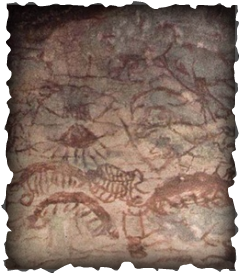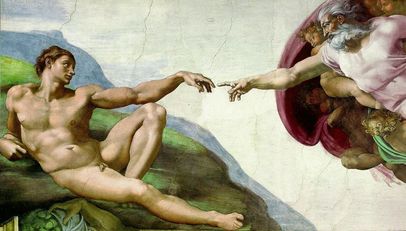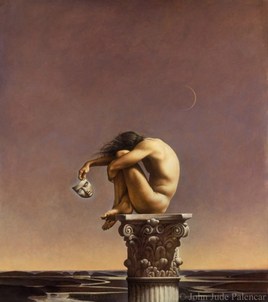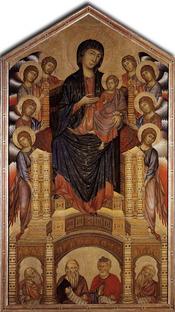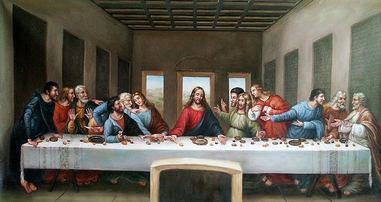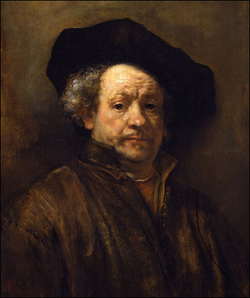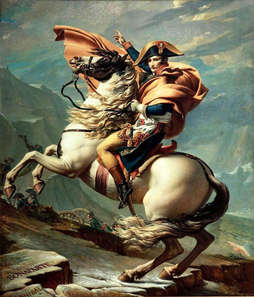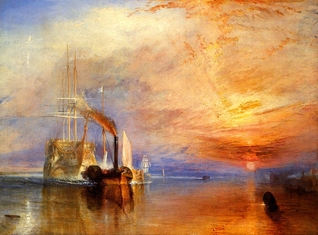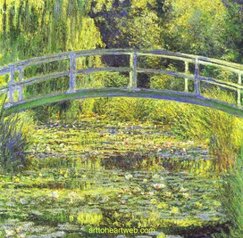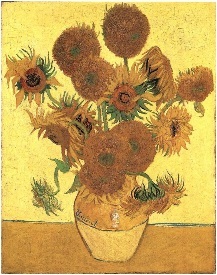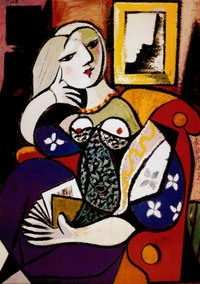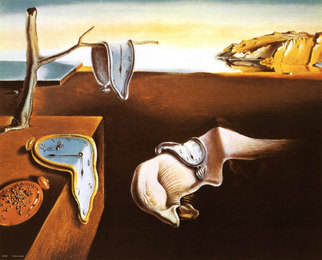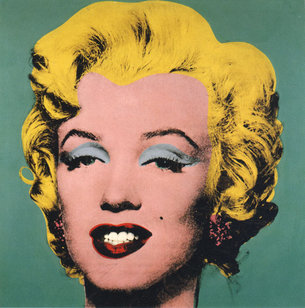Art Technology
brushes: people used their fingers and twigs as some of the first paint brushes. The twigs would have been chewed on by the artist and then once dried the fibers worked like the bristles of a paint brush. Some brushes came from animal hair
style: archaeologists had found outlines of human hands surrounded by sprays of paint it is believed that ancient painters would put their hands down on the rock, put the paint in their mouths, and by spraying the paint out between their lips create this design
paint: to make paint early peoples used minerals and other natural substances. Some of these natural substances included soot from fires and berries. Different rocks left various colored markings on the walls for example, iron oxide left a red mark while manganese oxide left a black mark. Minerals were also ground down into powder and mixed with water to make liquid paints. These paints proved to be very durable given that we can still see many of their remains today.
engravings: this technique involved cutting lines into a surface such as a wall or piece of stone. These engravings have been found to be used as a method of recording information, one of which was found to be a record of the phases of the moon. To make these lines early people used a tool called a burin which is a piece of very hard rock with a sharp tip. These engravings took a long time to make, especially when the two styles were combined. Some artists would create the engravings and then fill them in with paints to make the engraving more visible and attractive
style: archaeologists had found outlines of human hands surrounded by sprays of paint it is believed that ancient painters would put their hands down on the rock, put the paint in their mouths, and by spraying the paint out between their lips create this design
paint: to make paint early peoples used minerals and other natural substances. Some of these natural substances included soot from fires and berries. Different rocks left various colored markings on the walls for example, iron oxide left a red mark while manganese oxide left a black mark. Minerals were also ground down into powder and mixed with water to make liquid paints. These paints proved to be very durable given that we can still see many of their remains today.
engravings: this technique involved cutting lines into a surface such as a wall or piece of stone. These engravings have been found to be used as a method of recording information, one of which was found to be a record of the phases of the moon. To make these lines early people used a tool called a burin which is a piece of very hard rock with a sharp tip. These engravings took a long time to make, especially when the two styles were combined. Some artists would create the engravings and then fill them in with paints to make the engraving more visible and attractive
This painting created by Michelangelo in a style known as fresco, can be found on the ceiling of the Sistine Chapel. Pope Julius II had given Michelangelo the job of painting the entire ceiling of the chapel. Fresco is a very tedious process that calls for the laying down of different layers of plaster, followed by multiple coats of paint, but most importantly patience. Michelangelo was quite stubborn in that he mainly wanted to work on his work solely by himself which made the process that much harder. The Creation of Adam is only one of the many biblical scenes depicted on the ceiling, however it is definitely one of the most famous. In this painting it is said that god is giving Adam life, so to speak, with just the touch of his finger. The touch of god's finger was never depicted prior to Michelangelo's painting and the image has stuck ever since. This was a very secular way of presenting god which Michelangelo was criticized for quite often. Michelangelo was one of the first to illustrate god in what was considered to be such revealing clothing and Adam nude. This is one of the many amazing paintings made by Michelangelo despite his strongest point being sculpture.
-ART TIMELINE-
Madonna with Child
Cimabue
Madonna with Child, or Mary with Jesus, was a common focus of the art from this time period of 1150-1400 (known as the time period of Gothic and Medieval Art). Religious themes depicted with little detail, perspective, and color was what was commonly seen in the art during this time period. The quality of the artwork was determined by the materials used and how they were applied. Art from this time period is considered to be the building block of the more advanced art that was soon to follow.
The Last Supper
Leonardo Da Vinci
The Last Supper would be considered a piece of Renaissance art which could be found within the period ranging from 1400-1550. This scene represents the final days of Jesus when he announces that one of his twelve apostles would betray him. Here he also informs his guests that the wine they drink will represent his blood and the bread they eat after prayer will represent his body. From this painting you begin to see the advancement with the use of perspective illustrated by the walls of the room as well as the use of brighter color and shade. There is still more to come however as we leave the tradition of religious focus and enter more secular subjects.
Self Portrait
Rembrandt Van Rijn
This self portrait is from the time period known for Baroque art (from 1600s to 1750). Baroque art was known for its realistic subjects that depict action, powerful emotion, and dramatic lighting. Some of these paintings, although more secular, were still used as propaganda for the church with some mystical, religious, and historical subjects. These subjects were brought to life with characters in contemporary clothing. Again, notice how details, use of light, and shading is becoming more and more prominent as time goes on.
Napoleon Crossing The Alps
Jacques Louis David
This piece from the Neoclassical art period (1750-1850) illustrates the age of Enlightenment along with political, social, and cultural revolution. These were inspired by archaeological discoveries. Neoclassicism had historical accuracy that earlier classical art lacked. Historical scenes with heroes and virtue were used as patriotic propaganda inspiring feelings of nationalism giving the art more than just a religious purpose. Notice the wide use of color, secular focus, as well as wide range of color.
Overall: We see art evolving through the years which you can see based on our art timeline of various art movements. As you can see, the art beginning in the Middle Ages ranging from 1150 to 1400, shows mostly religious themes with little perspective, color, or shading. Madonna with Child, by Cimabue portrays these characteristics. As we develop through the years, we move to Renaissance art from 1400 to 1550, where we begin to see a wider range of color and a bit more secular themes, as shown in The Last Supper by Leonardo da Vinci. As we come to Impressionism, following Baroque and Romanticism, we see a more emotion stressed form of art with distinguished brush movements. Van Gogh's Sunflowers is a great example of art from this movement. Cubism came next, with distorted characteristics in cartoon-like structure, as shown in Woman With Book by Pablo Picasso. From there we move to more modern art movements including Pop Art, which is demonstrated by Andy Warhol's Marilyn.
Sources
- http://www.artchive.com/artchive/m/michelangelo/creation.jpg
- http://www.spectrumfantasticart.com/media_vault/images/1204055756.jpg become human
- http://www.patipelz.com/images/p-1926-flapper-gal.jpg
- http://www.bakedinny.com/wp-content/uploads/2008/11/marilyn3.jpg
- http://www.arttoheartweb.com/images/Claude%20Monet%20Water%20Lily%20Pond2.jpg
- http://www.learntoart.com/wp-content/uploads/2009/08/seurat-pointillism.jpg
- http://www.hudsonfla.com/artrencimabue.jpg
- http://www.abc.net.au/reslib/200802/r226453_898536.jpg
- http://www.philippalmer.net/wp-content/uploads/2010/03/rembrandt-self-portrait-1660.jpg
- http://upload.wikimedia.org/wikipedia/commons/archive/0/0e/20101026170349!Napoleon4.jpg
- http://somethingaboutengland.co.uk/wp-content/uploads/2010/10/FightingTemeraire.jpg
- http://www.vangoghgallery.com/painting/images/thumbnail/sunflowers.jpg
- http://imagecache5.art.com/p/LRG/8/849/U8NY000Z/pablo-picasso-woman-with-book.jpg
- http://4.bp.blogspot.com/_eoFYAYsCf5s/THT_V8RSB0I/AAAAAAAAC2s/YDEUcacwHc4/s400/The-Persistence-of-Memory.jpeg
- http://www.usefulcharts.com/arts-and-entertainment/visual-art/paintings-thumbs/pollock-no-5.jpg
- http://www.artyfactory.com

